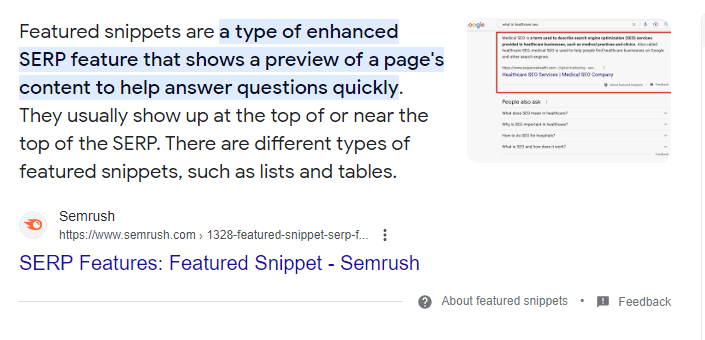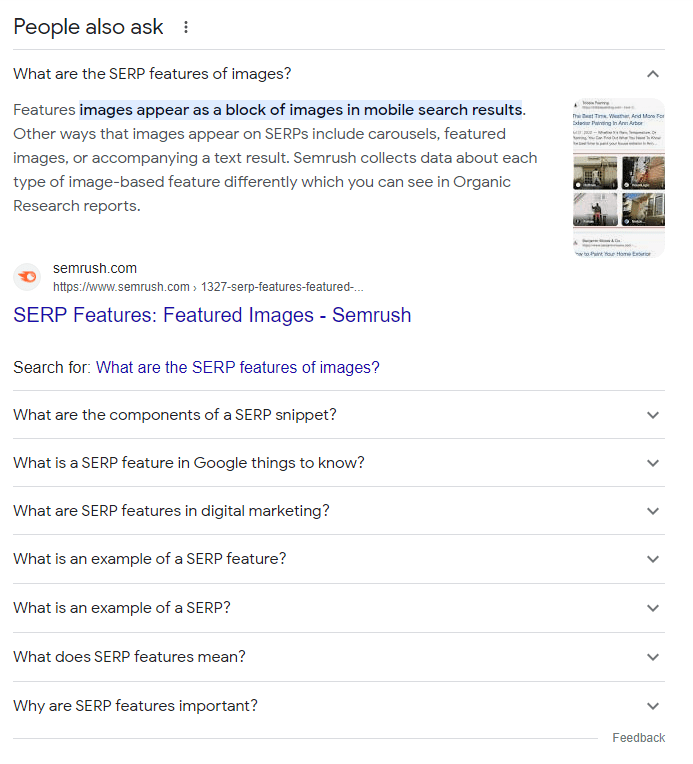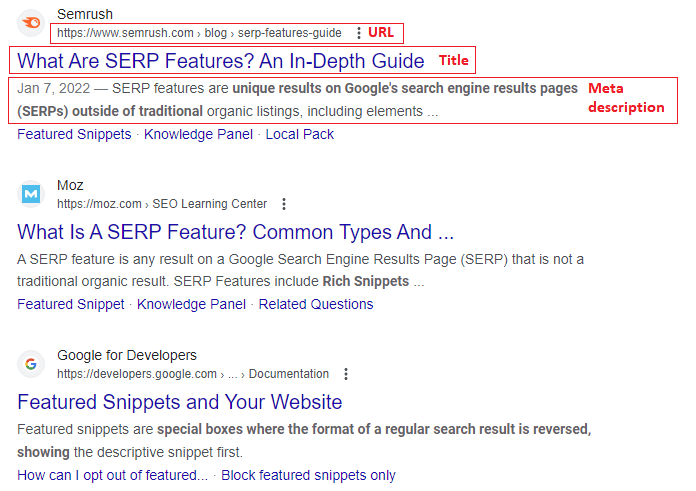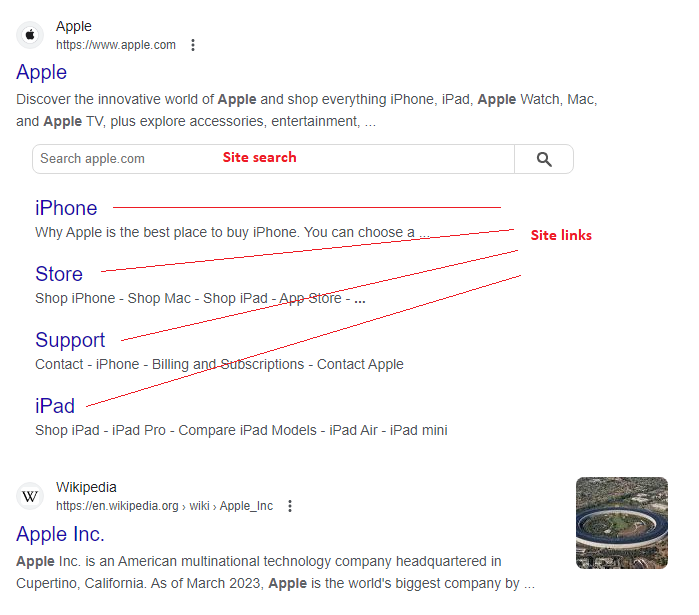Jump ahead to:
Introduction
A SERP (Search Engine Result Page) is the page Google (and the other search engines) return to you in response to a search query.
This post is part of a series and here is the link to the main glossary page.
Elements of a Search Engine Result Page
As Google is the dominant search engine, I’ll use the Google SERP for this section.
Search Generative Experience (SGE)
This is new, currently (12 Oct 2023) in beta, and available through Google labs. If you don’t have access to SGE, you can request access through the link, in the prior sentence.
Once you do, you see a beaker icon in the top right corner of chrome.

And this is what it looks like. It is the OpenAI ChatGPT output provided for the search request just made, so essentially, the Google search input field becomes a place where AI engine prompts can be entered.
SGE works with various AI engines:
- ChatGPT (version 3) from OpenAI is free
- ChatGPT4 from Open AI requires a paid plan
- Claude2 from Anthropic requires a paid plan
- Bard from Golgle has both free and paid levels, but for some reason I can’t get Bard to work right now. I’m getting the generic “Something went wrong” message and am being told to try again later.

Paid ads
Paid ads are identified by the label “Sponsored”, shown below outlined in red. The rules for how many ads show in your SERP when are not clear to some. I have seen four at the top of the SERP, I have also seen only one that is visible only by scrolling down the page.

Featured snippets
A featured snippet is an enhanced search engine result where text from the webpage is displayed directly within the SERP. It’s purpose is to provide a direct answer without the need to click through to the source webpage. having said that, a link to the source webpage is shown.
Below is a featured snipped from the Semrush website for the search phrase “what is the serp featured snippet”.

People also ask
The “People also ask” section of the SERP shows a set of related searches that people who searched for what you just searched for, also searched for.
It’s displayed in a FAQ expand/collapse format, such that when you expand one, you see the featured snippet for that search query.

Organic Search Results
Below the featured snippet are the organic search results, each of which contains the following:
- the URL (although in a breakcrumbs format)
- The post title
- The post meta description
While in theory you can set the post meta description by use of an SEO plugin such as Yoast or Rank Math, Google often ignores what we’ve specified and pulls text from the post to build the meta description from.

Big brand SERP features
And for some sites, there is a site links search box and site links, which allow you to perform a search of that site from within the SERP, or navigate directly to what Google perceives to be important or high traffic pages.
I’ve never met an SEO who didn’t wonder how to create this setup in the SERP for their sites, and the answer seems to be to become a big well known brand.

Knowledge panel
The knowledge panel is where knowledge graph entities are displayed. This is part of Entity SEO, and if you work in SEO, you need to learn more about this. So if you have not already done so, click the link at the start of this sentence and read that article. Consider it your entity SEO primer.

SERP Ranking
This is what all the SEOs of the world stress. How to get the #1 spot on page 1. And yes, this matters, greatly. But as you’ll see below (SERPs are personalized), not everyone gets the same SERP for the same search query.
Which is why in Google Search Console, the SERP position metric reported is AVERAGE position. There is no absolute position.
Click Through Rate
But of course, unless people pick a SERP result that links back to your website, they’ll never see your post or landing page. And this is why the post meta description matters. This is the first thing you write that a Google search user sees. So, as much as you can, the meta description should say some variant of “pick me”.
SERPs are personalized
As mentioned above, SERP’s are personalized. When two people enter the exact same search phrase, they do not see the exact same SERP.
The SERP is personalized, or customized, by presenting results based on a wide range of factors i.e.
- Physical location
- Browsing history
- Social settings
Sometimes SERPs may seem identical at first glance have subtle differences.
Interesting numbers about paid ads
Even though the average CTR for paid search ads is 3.17% across all industries, that 3.17% CTR generated $162.45 of ad revenue in 2022.
We're building a White Hat Link Exchange - for real - click here to learn more